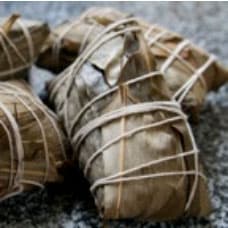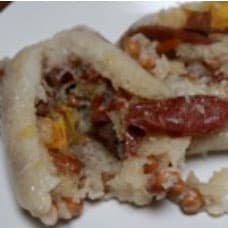Rationale
Estimation is an important skill in developing math understanding and in real life. However, it is not effective to teach it in isolated exercises. It should be embedded in all problem solving and calculation. Estimation skills require logical reasoning, which goes hand in hand with justification of the answer. There are two areas of math learning/ teaching that I would like to improve through this estimation unit.
One area I find many mistakes from my students is in labeling and converting units. Many students know how to do the arithmetic to find the area of a given shape. Very often, the units are missing in their answers or they label the unit incorrectly. They assume one square foot is twelve square inches. They are surprised to know that one square meter is not one hundred square centimeters. Usually, they understand their mistakes after seeing a pictorial representation of the units. Volume is another tricky concept for students to conceptualize, even though many students know how to find volume using a formula. In this unit, I try to build better number sense and deeper understanding through explorations in area and volume relating to rice.
Another area I want to improve is to help student develop stronger problem solving and math reasoning skills and the ability to communicate the math thinking. When students approach a math problem, the capable students will try to get to the answer using mental math. These are students who often have a hard time to explain their work because they already figured out the answer. Other students attempt to solve the problems using the easiest way they can think of, without thinking through the logic of their solutions. Then, they ask the ultimate question, is the answer correct? Most students will automatically think that their answers are wrong if I ask them to justify their answers. Through this unit, I would like to help students to be more confident in their solutions of math problems by developing a strategy to approach the estimation problems and a routine to show work and justify their answer.
Why Do I Choose Rice as the Topic?
On the global scale, rice is an important food. Over half of the world's population depends on rice as a staple food. World organizations have been researching the trends of consumption, production and price of rice for many years. A major area of research is to increase rice production to meet the demands in population growth and fight against hunger. In this unit, students will have opportunities to estimate using some of the some of the statistics related to rice consumption and production. I hope this will help student to gain a wider perspective on a familiar food.
On a personal scale, rice is relevant to our lives since it is a food we often enjoy.
Rice appears in many delicious dishes around the world. There is congee from China, sushi from Japan, pilafs from India, risotto from Italy, risotto, paella from Spain. When food is mentioned or present in the classroom, motivation and interest seems to heighten naturally. I choose rice for the topic as it relates to a cooking lesson in one of our cultural units. The idea came to mind because I had to estimate how much of the rice to prepare for the cooking lesson.
What is a Zong, aka Rice Tamale?


(photos by me)
As part of the Chinese language arts component, the 6 th grade classes learn about the Dragon Boat Festival, which is the 5 th day of the 5 th month on the lunar calendar and usually falls in June. One of the traditional foods for this festival is zong, a kind of rice tamale, rice with other ingredients wrapped in bamboo leaves and cooked by boiling or steaming. The rice tamale, which is also eaten by many Southeast Asian cultures, is sometimes called a rice dumpling. In Mandarin, the official Chinese dialect, it is called zong or zongzi. In this paper, I will refer to it as zong.
Wrapping of the zong is traditionally a family affair. Every family would make their own and give them as gifts to friends and relatives. These days, a variety of the zong can be purchased from Asian markets. The ingredients, size and shape of the rice tamale may vary a great deal, representing the many different regions and subcultures of China. The savory kind of zong may have peanuts, red beans, mung beans, chestnuts, shitake mushrooms, red onions, pork, Chinese sausages, dried shrimps, dried scallops, salted duck egg yolks, etc. There are also sweet kinds of zong with dates, sweetened bean paste, lotus seeds, chestnuts, etc. However, rice is always the main ingredient. The zong usually calls for glutinous rice, but white rice is also used. In this unit, we will do estimations referring to information on the most common type, the long grain rice. The zong with rice, meat and other ingredients wrapped in bamboo leaves makes a convenient meal bundle. We will establish the zong as the portion to feed one person for one meal.

Comments: